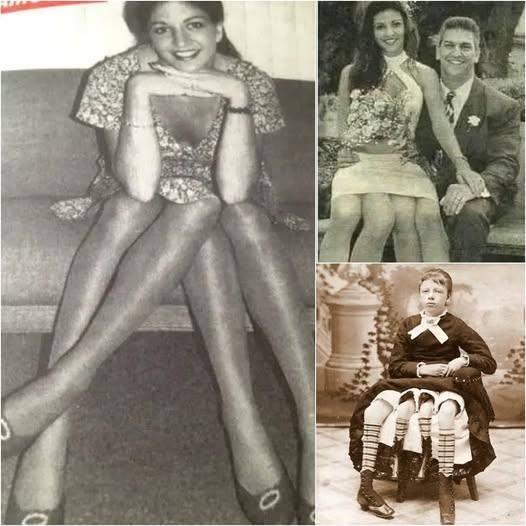The Extraordinary Life of Josephine Myrtle Corbin

Born in 1868 in Tennessee, Josephine Myrtle Corbin’s life became a symbol of resilience, dignity, and the human capacity to overcome adversity. Known to the world as the “Four-Legged Woman,” Josephine’s extraordinary condition—dipygus—resulted in her having two pelvises and four legs. While the sideshow stage often highlighted her physical uniqueness, her life story reveals much more than just spectacle. Josephine Myrtle Corbin defied the expectations of her time, proving that strength and humanity can thrive in the face of extreme difference.
The Woman Behind the Spectacle

Josephine’s condition, dipygus, was an extremely rare congenital anomaly that led to her being born with two fully formed lower halves of her body, each with its own pelvis and set of legs. As a child, her condition became a subject of fascination, and by the time she was a teenager, she had become a well-known figure in the American sideshow circuit. Traveling with various circuses, she was presented as a human curiosity, often drawing large crowds who were intrigued by her physical difference.
However, Josephine’s story is much more than just a medical anomaly. Beneath the sideshow persona, she was a woman who lived with grace, intelligence, and determination. While many in her position might have been confined by the public gaze, Josephine embraced life with a sense of normalcy. In an era when people with disabilities were often marginalized, she broke barriers by achieving things most people would have thought impossible.
A Life Beyond the Sideshow
In addition to her sideshow performances, Josephine led a life that many would find remarkable. At the age of 19, she married a man named Frank Corbin, and together they had four children. Despite her unique condition, she was a devoted wife and mother, raising her children with love and care. Her ability to marry and build a family was a powerful statement about her independence and strength, as society at the time often viewed individuals like Josephine as “other” or incapable of leading normal lives.

Her ability to live a full, independent life, outside of the sideshow spotlight, has been a key part of her legacy. Josephine Myrtle Corbin lived not only with resilience but with an unwavering sense of dignity. Though she continued to perform in the circus for some time, her life offstage was one of familial devotion and personal fulfillment.
Josephine’s Enduring Legacy
Josephine Myrtle Corbin’s story is often overlooked when it comes to historical narratives, but it carries a timeless message about the human spirit. She did not allow her physical differences to define her existence, and she is remembered not just for her rare condition but for the way she shaped her own destiny. In an age when the disabled were often relegated to the margins of society, Josephine’s life was a testament to the power of resilience, determination, and the ability to live life on one’s own terms.
Her legacy continues to serve as a reminder that difference, far from being a source of shame or limitation, can be the foundation of strength, creativity, and meaning. Josephine Myrtle Corbin’s life was not just a spectacle—it was a triumph of the human spirit.
Conclusion
Josephine Myrtle Corbin, the “Four-Legged Woman,” left a profound mark on history—not just as a medical curiosity but as a symbol of strength, dignity, and humanity’s ability to find meaning in difference. While her unique condition brought her fame in her time, it is her resilience, determination, and the remarkable life she led that should continue to inspire generations to come. Her story is a reminder that our greatest challenges often reveal our greatest strengths, and that even in the face of adversity, we can shape our own legacy.











